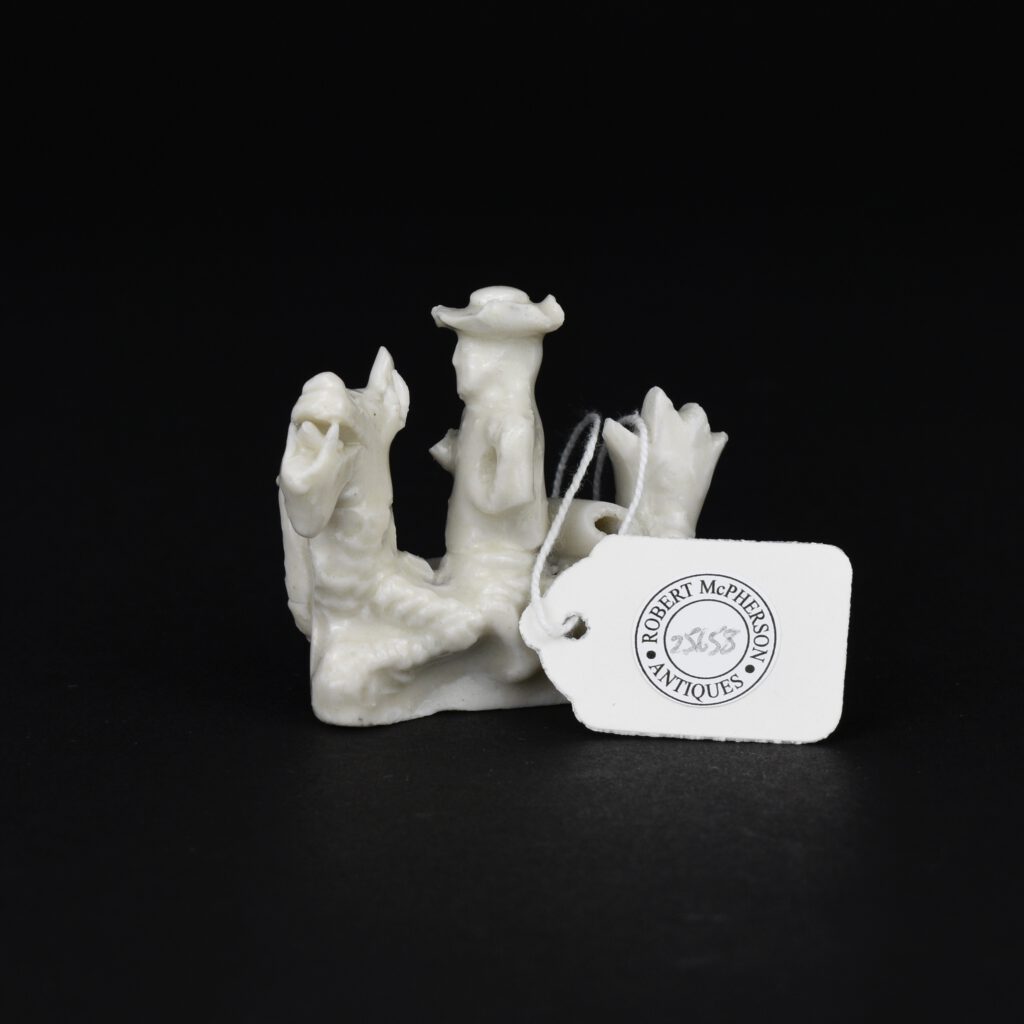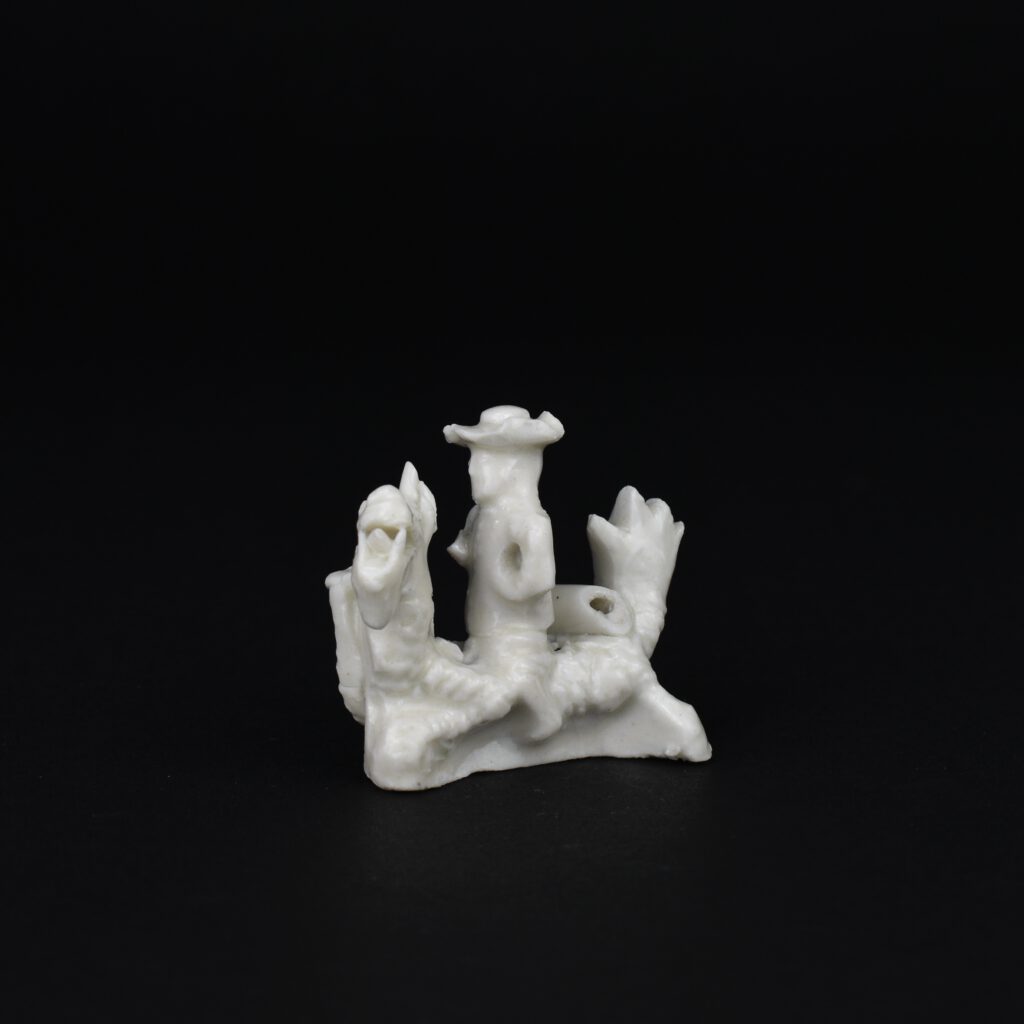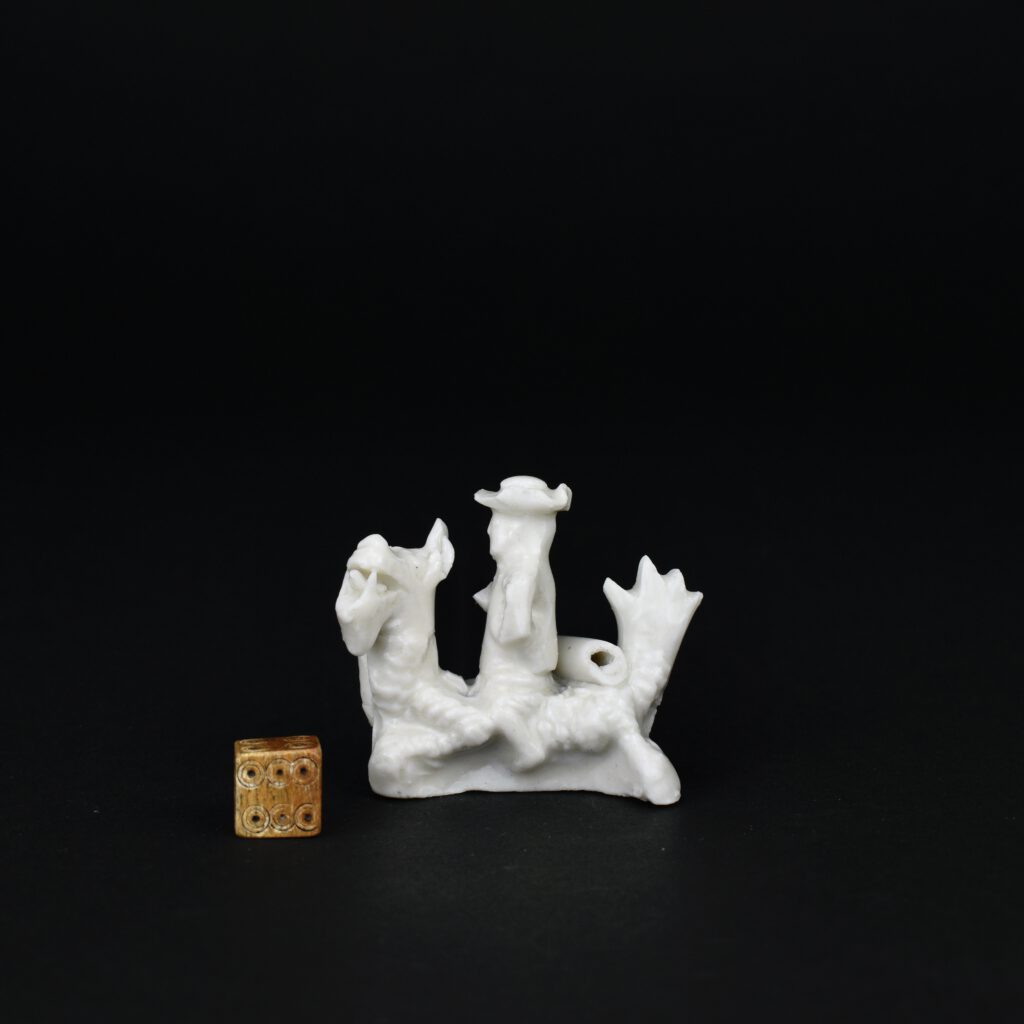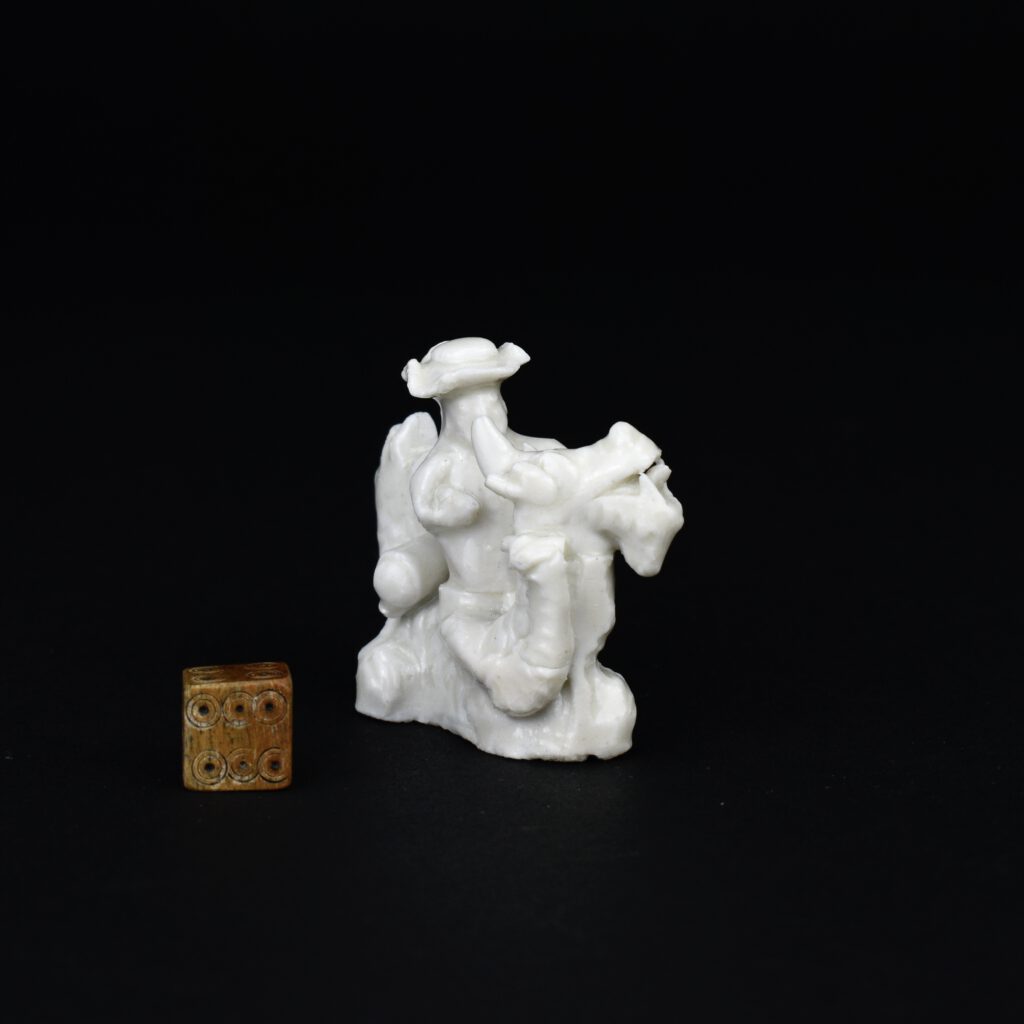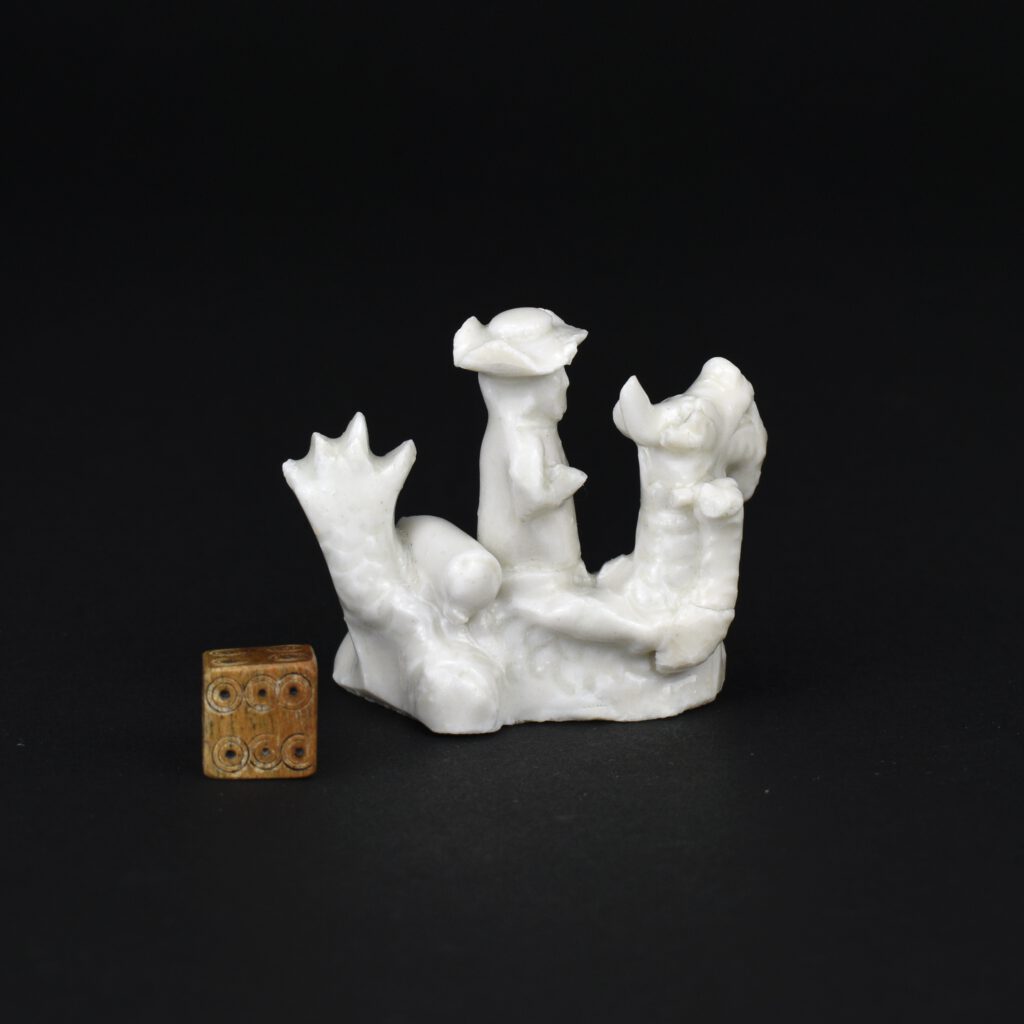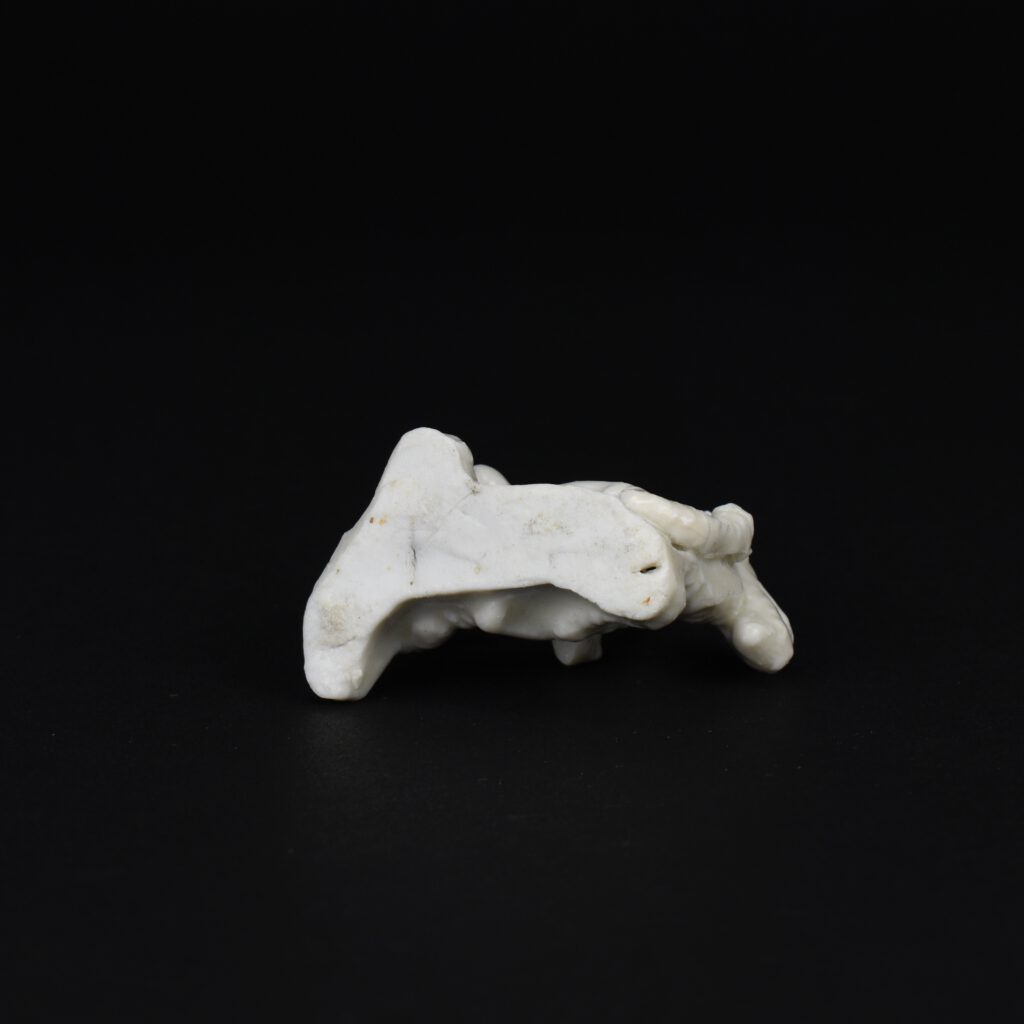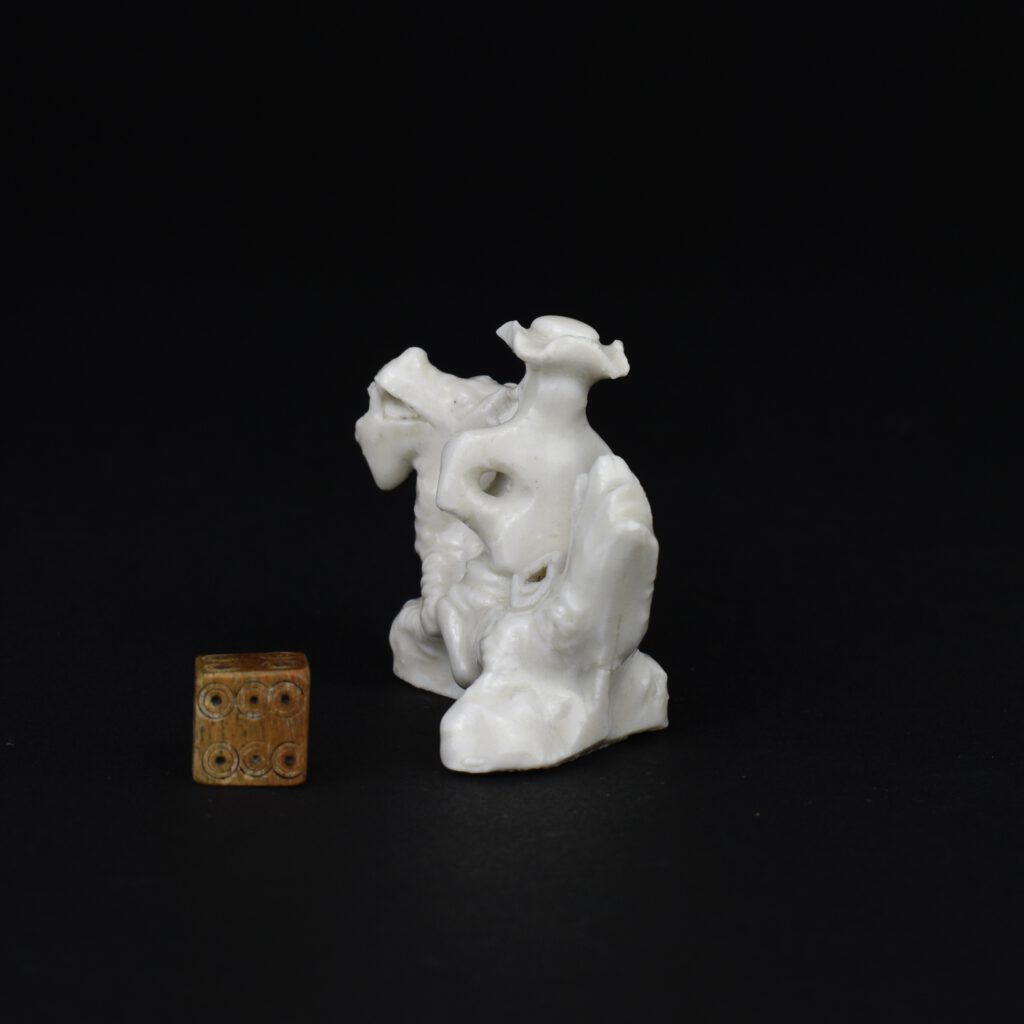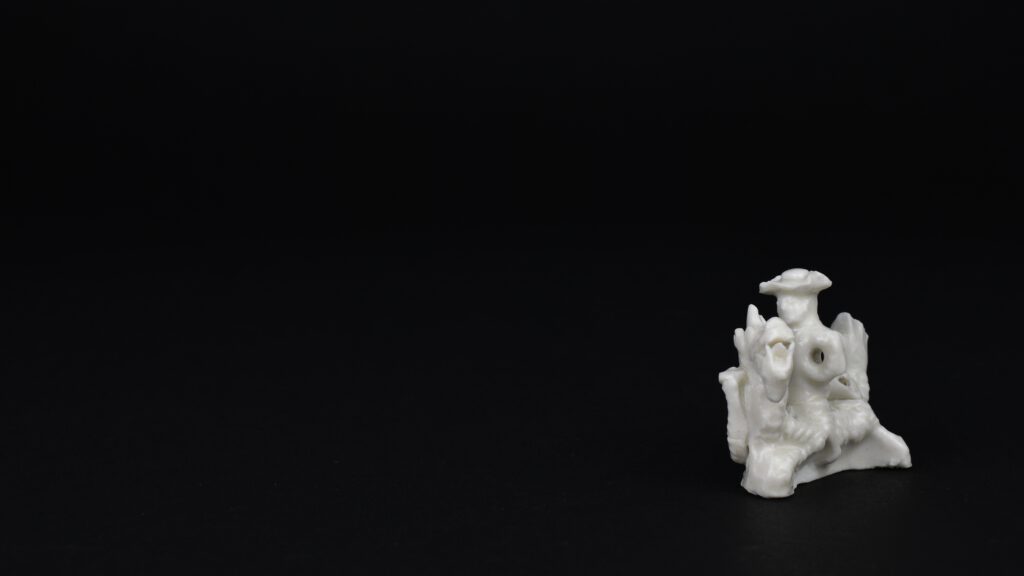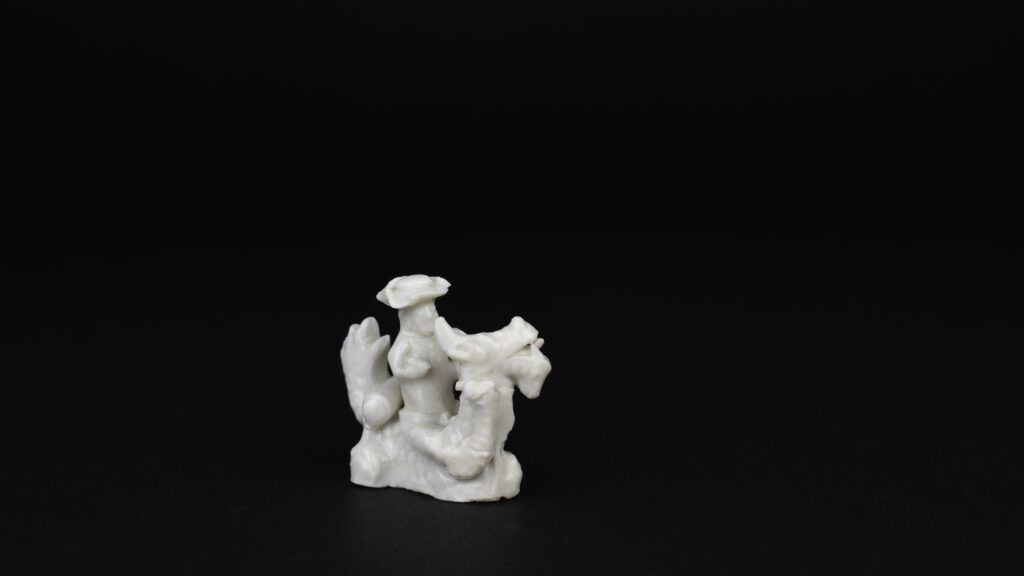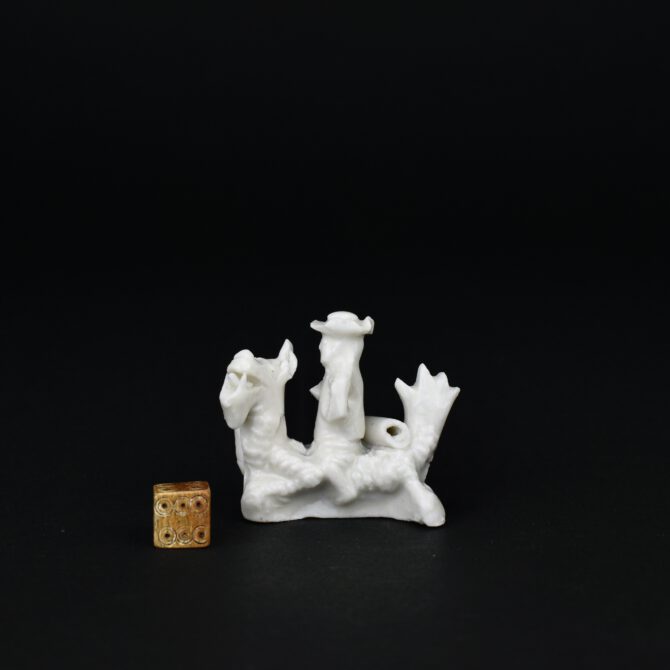
A Kangxi Blanc de Chine Porcelain Whistle
A Kangxi Blanc de Chine Porcelain Whistle, Dehua Kilns c.1690-1710. This Kangxi porcelain whistle is modelled as an Dutchman seated on an dragon. The records of the Dashwood sale in September 1703, an English Supra-cargo, include 10,800 `square toys` (seals), the other 5,400 `toys` were models of animals, `men on beasts` and the 490 `small white dogs` were priced at 1d each (Geoffrey A. Godden, see references).
Models such as the present example were luted together from moulded sections. In 18th century England the people who carried out this process were called ‘repairers’, indeed the process is similar to repairing broken ceramics, except that you use clay as your glue. Wet clay was used to stick the leather-hard moulded sections together, the process is referred to as luting from the Latin Lutum meaning mud or clay. To help made sure the join will be as strong as possible the edges of the clay sections are scored, so the luting material really binds with the joining surfaces, especially when firm pressure is applied. The luted joins are then cleaned, smoothed down, so the piece looks seamless.
See below for more photographs and references.
SOLD
- Condition
- Small to the Dutchman's hat and to the horns of the dragon, large section of the whistle is missing.
- Size
- Length 6.1 cm (2 3/4 inches)
- Provenance
- From a Private English Collection of Blanc de Chine Porcelain
- Stock number
- 25658
Information
Blanc de Chine Porcelain :
The porcelain known in the West as Blanc de Chine was produced 300 miles south of the main Chinese kiln complex of Jingdezhen. The term Blanc de Chine refers to the fine grain white porcelain made at the kilns situated near Dehua in the coastal province of Fujian, these kilns also produced other types of porcelain. A rather freely painted blue and white ware, porcelain with brightly coloured `Swatow` type enamels as well as pieces with a brown iron-rich glaze. However it is the white blanc de Chine wares that have made these kilns famous. The quality and colour achieved by the Dehua potters was partly due to the local porcelain stone, it was unusually pure and was used without kaolin being added. This, combined with a low iron content and other chemical factors within the body as well as the glaze, enabled the potters to produce superb ivory-white Blanc de Chine porcelain.
